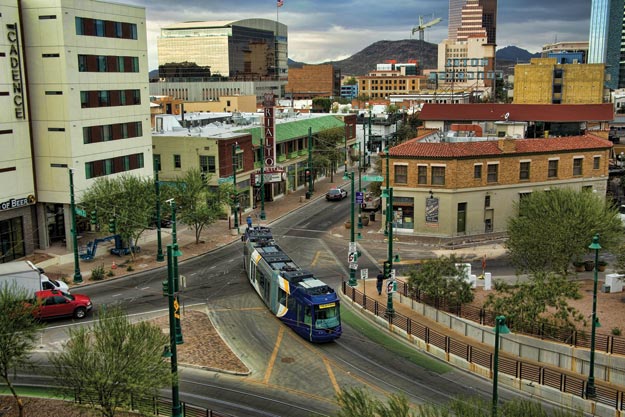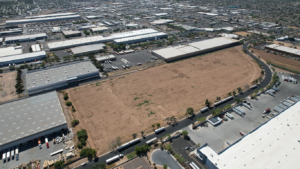While Phoenix is in the throes of commercial recovery, Tucson is, comparably, about 18 to 24 months behind. The city’s proximity to the border is touted as a draw for investors, but the player with the best hand remains the University of Arizona (UA), which is not only the largest employer in southern Arizona but also the nucleus to an otherwise stagnant city.
As development stands, experts point out Tucson has added 1,900 student housing units in the last year and the retail and office sectors in proximity to UA and Pima Community College show promise. In April, Colliers closed the largest office sale in Tucson since 2008.
“Multifamily has led the recovery in almost all markets,” says Cindy Cooke, who heads the Cooke Multifamily Investment Team at Colliers. “Since so much of Tucson is UA and the medical school, I think you only see that continue to be strong. The growth will be fantastic.” The first sign in recovery, she says, is when vacancy increases. Right now, Tucson’s multifamily vacancy is at 7.9 percent. In 2009, it exceeded 11 percent.
The UA is working to spin its innovation to the private sector and create small firms offering high-paying jobs in many areas of core competency, says President and Managing Shareholder of Cushman & Wakefield | PICOR, Mike Hammond. “The UA more than ever drives our community in a positive direction,” he says.
Kurt Wadington, Sundt Construction’s Tucson building group leader agrees. He adds that “apart from downtown and other isolated projects, Tucson’s market continues its softness in the shadow of a very slow economic recovery.”
Tucson’s streetcar project, Sun Link, aims to strengthen those existing assets and ignite future development. “With the recent infusion of student housing and corporate offices, downtown has become a desirable location for restaurants and bars as more people live and work in the area,” says Wadington. “This increased day and nighttime activity, that is expected to increase when Tucson’s new streetcar becomes operational on July 25, has numerous developers considering additional retail, office and housing projects.”
Though pens are to drawing boards, and the Sun Link has generated a “flurry of land sales,” there is some hesitation in development. Cushman & Wakefield | PICOR called Tucson a market in search of demand in its Q1 2014 reports. “One-liners are always a little true and at the same time false,” says Hammond. “Tucson says it wants good jobs but it acts differently when they appear.
Tucsonans tend to like the environment and object to nearly any attempt to develop on the land. This depresses demand as the process to develop anything is cumbersome and expensive with very little certainty of success, so we grow slower and some would say that is good. The right balance is tough to achieve.
“As government indebtedness drops, it is anticipated Pima County, followed by other jurisdictions, will pursue bonding authorizations for badly needed capital projects. Other needs may be met through public-private partnerships as public infrastructure needs continue to mount.”
UA is closely followed by Raytheon Missile Systems, Davis-Monthan Air Force Base and the State of Arizona as top employers. Simply, southern Arizona relies on government funding.“I think the big rock the southern Arizona market is waiting for is some resolution at the national level on debt and how government goes forward at the federal spending level,” says Hammond.
“Much of our area is dependent of spending at the federal level and that has been decreasing, whether for infrastructure, military in general — the A10 fighter specifically — and Raytheon. No one expects funding to increase in these areas and these are very good jobs that bring new money into the area. The multiplier effect is real in the creation of jobs or the loss of jobs as the case may be.”




